Politics
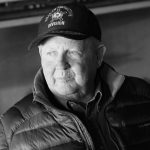 We all know about the Secret Service, but do we really know about them. They are always standing near the President and the other people they are sworn to protect, but most of the time they are virtually invisible. It’s not that we can’t see them, but rather that we don’t notice them, unless something goes haywire. Then their presence is very well known as the whisk the President to safety, while looking for the culprit who has dared to enter that guarded space that surrounds him.
We all know about the Secret Service, but do we really know about them. They are always standing near the President and the other people they are sworn to protect, but most of the time they are virtually invisible. It’s not that we can’t see them, but rather that we don’t notice them, unless something goes haywire. Then their presence is very well known as the whisk the President to safety, while looking for the culprit who has dared to enter that guarded space that surrounds him.
That is information we probably all know, but the Secret Service is much more. Founded in 1865, as an agency to stop counterfeiting, the past 150 years have seen many changes to that institution. Because it is their job to protect those they serve, the Secret Service agents must know a great deal about the people they guard, but they must also know a great deal about the essence of the political process.
Depending on their own interests, the President’s hobbies can be a pain for the Secret Service agents. If the President wants to go jogging, the Secret Service must go along, whether they like to jog or not. Also, the route must be checked, and can be a security nightmare. This applies to any trip the President makes as well.  The hotel, route, and especially the areas where he might be spending time, have to be checked and re-checked. There is no room for error, because if a gunman finds a place to hide, the President’s life could be in grave danger.
The hotel, route, and especially the areas where he might be spending time, have to be checked and re-checked. There is no room for error, because if a gunman finds a place to hide, the President’s life could be in grave danger.
Guarding the President also meant guarding his family, and if the children were young, it was much like being a glorified babysitter. The agent had to go to friends’ houses, ice cream parlors, toy stores, and a number of other places. Not all first children are well behaved, and the Secret Service witnessed it share of tantrums. If the kids didn’t like how things were going, they simply called their parents, who often told the agents to “take the child wherever he/she wanted to go.” This usually served to make the kids more bold and belligerent. Of course, not all of the children were unruly, but I would imagine that more were, than weren’t.
The Secret Service had to remain bi-partisan, because no matter what their political views were, their job was to protect the President, regardless of his political affiliation. The Secret Service agents also had to deal with the reckless behavior of the Presidents they served. Some Presidents were promiscuous, and expected their agents to warn them if their wife was coming in. Others were reckless with their own safety, as was the case when John F Kennedy, who insisted on riding through Dallas in a convertible on that fateful November day in 1963.
 While guarding the President of the United States can be stressful and worrisome, it can also be very rewarding. Of course, the Secret Service agents travel the world with the President, and they have front row seats to some of the greatest events in history. Still, some Secret Service agents actually bond with the President. Such was the case with President Ronald Reagan and Agent John Barletta. Agent Barletta says of President Reagan, “We worked so well together. The whole relationship was a projection of him, how he was… He was a great guy to be around. I wouldn’t trade those years for anything.” For most of the Secret Service agents, it is an honor and a privilege to protect the President. It doesn’t matter if the work id time consuming, complicated, and stressful. These men and women feel born to protect the President.
While guarding the President of the United States can be stressful and worrisome, it can also be very rewarding. Of course, the Secret Service agents travel the world with the President, and they have front row seats to some of the greatest events in history. Still, some Secret Service agents actually bond with the President. Such was the case with President Ronald Reagan and Agent John Barletta. Agent Barletta says of President Reagan, “We worked so well together. The whole relationship was a projection of him, how he was… He was a great guy to be around. I wouldn’t trade those years for anything.” For most of the Secret Service agents, it is an honor and a privilege to protect the President. It doesn’t matter if the work id time consuming, complicated, and stressful. These men and women feel born to protect the President.
 In a time of national turmoil, it has become trendy to disrespect the flag of the United States. It is all done supposedly to protest things like racism or police brutality, but in reality, the flag, and our allegiance to it and our nation have nothing to do with those causes. I agree with the rights of citizens to carry on a peaceful protest, but I don’t agree with this way of doing it…or burning our flag. Some people will not like this view of things, but I wonder why the flag is chosen as the avenue for these protests. These protesters don’t want to leave this nation. They know it would be crazy to do so, because they would never have the same kinds of freedoms they have here, especially the right to protest. That is fine, but they use flag is a means to grab attention, and that is where I disagree. A protest can be held, while still remaining in solidarity as a nation. People will listen when the nation is not disrespected.
In a time of national turmoil, it has become trendy to disrespect the flag of the United States. It is all done supposedly to protest things like racism or police brutality, but in reality, the flag, and our allegiance to it and our nation have nothing to do with those causes. I agree with the rights of citizens to carry on a peaceful protest, but I don’t agree with this way of doing it…or burning our flag. Some people will not like this view of things, but I wonder why the flag is chosen as the avenue for these protests. These protesters don’t want to leave this nation. They know it would be crazy to do so, because they would never have the same kinds of freedoms they have here, especially the right to protest. That is fine, but they use flag is a means to grab attention, and that is where I disagree. A protest can be held, while still remaining in solidarity as a nation. People will listen when the nation is not disrespected.
On December 28, 1945, the US Congress officially recognized the Pledge of Allegiance to the Flag. At that time they also gave instructions as to how the pledge should be performed. They stated that The Pledge of Allegiance to the Flag should be rendered by standing at attention facing the flag with the right hand over the 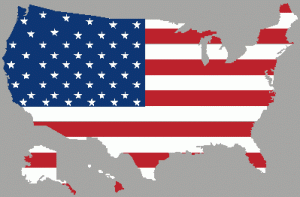 heart. The statement of the pledge was specific, “I pledge allegiance to the Flag of the United States of America, and to the Republic for which it stands, one Nation under God, indivisible, with liberty and justice for all.” The pledge is a statement of a people who are proud to be Americans. I know that these days, there are those who are not “proud to be Americans,” and to that I say, “Then leave!!” Our citizens are not prisoners here. They are free to travel…free to leave, so if you don’t love this nation, then go.
heart. The statement of the pledge was specific, “I pledge allegiance to the Flag of the United States of America, and to the Republic for which it stands, one Nation under God, indivisible, with liberty and justice for all.” The pledge is a statement of a people who are proud to be Americans. I know that these days, there are those who are not “proud to be Americans,” and to that I say, “Then leave!!” Our citizens are not prisoners here. They are free to travel…free to leave, so if you don’t love this nation, then go.
I realize that while the people using our flag and our pledge don’t want to leave, they just want to disrespect it. Oddly, many of them would disagree with that statement, but to use the flag and the pledge as part of a protest is, in my opinion, disrespectful to our nation. There are many other ways to protest, and if these people want the support of the nation for their protest, they need to understand that disrespecting the nation that the people love, will not get the backing of the masses. The people are so angry about the disrespecting of the flag, pledge, and nation, that they don’t even listen to the “meat” of the protest. The avenue they have chosen  completely defeats the purpose of the protest.
completely defeats the purpose of the protest.
We, the people of the Unites States of America must turn back to allegiance to this nation that was created “under God” and find another avenue in which to protest the things about it, of which we disapprove. Change can happen, but we must put the masses on our side to affect change, not turn them against us and the things we protest. On this day, the 74th anniversary of the day when we first recognized our Pledge of Allegiance, I ask those who would protest, to turn from using the flag and pledge as an avenue to a protest, and use methods of honor and not dishonor.
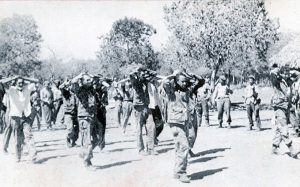 We have all heard the song “Home for Christmas.” It’s about a young woman falls in love and develops a long-distance relationship with a soldier on active duty, The soldier sings the song, knowing he probably won’t be home for Christmas that year. It was a bittersweet, sentimental story, that hopefully ended well for the couple.
We have all heard the song “Home for Christmas.” It’s about a young woman falls in love and develops a long-distance relationship with a soldier on active duty, The soldier sings the song, knowing he probably won’t be home for Christmas that year. It was a bittersweet, sentimental story, that hopefully ended well for the couple.
In 1962, however, the song could have taken a totally different meaning. The Bay of Pigs Invasion…failed attempt by US-sponsored Cuban exiles to reverse Fidel Castro’s Cuban Revolution, beginning with a military invasion of northern Cuba. The operation lasted just three days, from April 17 to April 20, 1961. About 1,202 members of the invading Brigade 2506 were captured, of whom nine died from asphyxiation during transfer to Havana in a closed truck. For the families of these men, as for any family of a POW, it was devastating. To make matters worse, the Cuban government wanted $53 million in food and medical supplies, to be donated by companies all over the United States, as a condition for their release. The US government agreed to the terms, in the hope of getting the men released by Christmas.
The deal made, with only one glitch, when Castro changed the deal…demanding an additional $2.9 million in cash, just as the prisoners were preparing to leave on December 23rd. The money was raised in a frantic day of fundraising on 24 December by the president’s brother, Attorney General Robert F. Kennedy, and General Lucius D Clay, an advisor to the Cuban Families Committee of prisoners’ relatives. The largest donation was $1m, given by a donor who wished to remain anonymous but was not, the government said, part of the Kennedy family. Finally on December 24th, The airlift of the prisoners began, when the first 107 men boarded a DC6  airliner supplied by Pan American World Airways at a military airbase near Havana. After just four flights, however, the operation was suspended for the night, to the consternation of the thousands of anxious relatives of the prisoners, keeping vigil in Florida for their return. Flights resumed early this morning, and by the end of the day most of the 1,113 prisoners had been safely returned. Cuban exiles in the United States arranged the return of 60 wounded prisoners soon afterwards for $2.5 million. The remainder were held in captivity until October 1986, when they were released. Ramon Conte Hernandez was the last one released, and the ordeal was finally over. As the song goes, they would finally be “Home For Christmas.”
airliner supplied by Pan American World Airways at a military airbase near Havana. After just four flights, however, the operation was suspended for the night, to the consternation of the thousands of anxious relatives of the prisoners, keeping vigil in Florida for their return. Flights resumed early this morning, and by the end of the day most of the 1,113 prisoners had been safely returned. Cuban exiles in the United States arranged the return of 60 wounded prisoners soon afterwards for $2.5 million. The remainder were held in captivity until October 1986, when they were released. Ramon Conte Hernandez was the last one released, and the ordeal was finally over. As the song goes, they would finally be “Home For Christmas.”
 After the Japanese attacked Pearl Harbor, the people of the United States were justifiably nervous about the Japanese American citizens. Many of these people had family in Japan, and their loyalty was in question. No one felt safe, so on February 19, 1942, just 10 weeks later, President Franklin D Roosevelt signed Executive Order 9066, authorizing the removal of any or all people from military areas “as deemed necessary or desirable.”
After the Japanese attacked Pearl Harbor, the people of the United States were justifiably nervous about the Japanese American citizens. Many of these people had family in Japan, and their loyalty was in question. No one felt safe, so on February 19, 1942, just 10 weeks later, President Franklin D Roosevelt signed Executive Order 9066, authorizing the removal of any or all people from military areas “as deemed necessary or desirable.”
The feeling of panic that had been simmering since the attack wasn’t going away when it came to the Japanese, or the Japanese Americans, so the military defined the entire West Coast, home to the majority of Americans of Japanese ancestry or citizenship, as a military area. What began as a plan to protect the military areas, quickly escalated, and by June, more than 110,000 Japanese Americans were relocated to remote internment camps built by the United States military in scattered locations around the 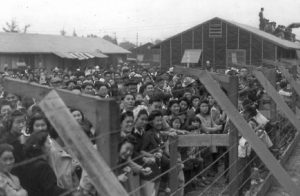 country, where they would remain for the next two and a half years. Many of these Japanese Americans endured extremely difficult living conditions and poor treatment by their military guards. It wasn’t what we would expect of our own military, but it was a tense time. It almost seemed like “guilt by association” or in this case, by race. They were Japanese, and that made people wary of them…and no one was in the mood to listen to their side.
country, where they would remain for the next two and a half years. Many of these Japanese Americans endured extremely difficult living conditions and poor treatment by their military guards. It wasn’t what we would expect of our own military, but it was a tense time. It almost seemed like “guilt by association” or in this case, by race. They were Japanese, and that made people wary of them…and no one was in the mood to listen to their side.
The internment of these loyal Japanese Americans was, at the very least, unfair, and at worst, just short of criminal. It was only short of criminal because it was approved by the President of the United States. Finally, after two and a half years, United States Major General Henry C Pratt issued Public Proclamation No. 21, declaring that, effective January 2, 1945, Japanese American “evacuees” from the West Coast could return to their homes. The nightmare was over. Of 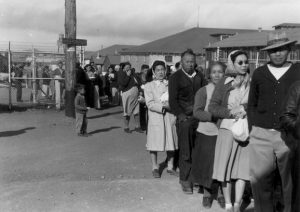 course, being over doesn’t mean that everything went immediately back to the way it was before. These people had to find new jobs and homes, because their jobs, and possibly their homes, were no longer there for them to return to.
course, being over doesn’t mean that everything went immediately back to the way it was before. These people had to find new jobs and homes, because their jobs, and possibly their homes, were no longer there for them to return to.
During the course of World War II, ten Americans were convicted of spying for Japan, but not one of them was of Japanese ancestry, which is disgusting…not that no Japanese Americans were part of that, but that any American would betray their country in this way. In 1988, President Ronald Reagan signed a bill to recompense each surviving internee with a tax-free check for $20,000 and an apology from the United States government.
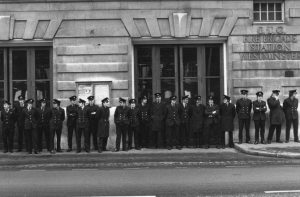 When we think of emergency personnel, we think of people who willingly put their lives on the line for others, and that is a good analogy, but while these people are passionate about their career, it is still a career. They expect, and need to be paid accordingly. Their job is dangerous, and they risk their lives every day, to go out and save other people. Unfortunately, they have to make a living too. For firefighters in England in 1977, the living they were making, wasn’t enough to support their families. So, as often happens, when the pay doesn’t equal the risk, the firefighters went on strike. They were demanding a 30% raise in pay.
When we think of emergency personnel, we think of people who willingly put their lives on the line for others, and that is a good analogy, but while these people are passionate about their career, it is still a career. They expect, and need to be paid accordingly. Their job is dangerous, and they risk their lives every day, to go out and save other people. Unfortunately, they have to make a living too. For firefighters in England in 1977, the living they were making, wasn’t enough to support their families. So, as often happens, when the pay doesn’t equal the risk, the firefighters went on strike. They were demanding a 30% raise in pay.
As the strike began, the 30,000 strong Fire Brigades Union claimed that 97.5% of its members had heeded the strike call and were no longer manning the pumps. It doesn’t take much imagination to realize that without firefighters, the cities were in serious trouble. Talks continued between union leaders and employers, but it didn’t look like there would be an early resolution, because the government insisted there was no breach of its 10% public sector pay ceiling.
As the situation became more critical, troops were brought in to provide emergency coverage of the cities. There was still concern among the soldiers about their lack of training and modern firefighting equipment. They would do their jobs, but that didn’t mean that they would know how to do it well. The reality is that firefighting is a highly skilled job, in which the people are trained, and they know the risks.
The firefighters said that they had already waited two years for the Government to consider their pay claim…and they were done waiting. During that two years, the police department had received a substantial pay rise while firefighters, in line with many others, had to settle for £6 per week. Much of the discussion between the union and employers is focused on the possibility of a reduction in the 48-hour working week, which would allow officers to earn considerable overtime payments.
In many areas firefighters have deserted their stations only reluctantly. Firemen, still wearing their uniforms and pickets armbands, rushed to the scene of a fire at St Andrew’s Hospital in Bow, East London, after a basement storeroom caught light. One of the officers said: “We couldn’t let them die.” And, “It was a hospital, what else could we do but come and help?” A colleague Barry Holmes said: “The situation here was really dangerous and people could have died if we had not come.” Emergency troops arrived at the scene first, and fire officers said afterwards that without their help the building would have burned to the ground.
“Elsewhere in the country, troops averted a major catastrophe on Merseyside when they stopped a haulage depot blaze at Kirkdale spreading to a 500 gallon gasoline storage tank. A woman and her twin sons escaped from a bungalow at Wallington in Surrey after a gas container exploded starting a fire. Troops in a Green Goddess had to drive 25 minutes from Croydon and the house was destroyed. The local fire station was less than three minutes drive away.” The striking firefighters received no strike pay, but got donations from the  public as Christmas approached. The insurance companies picked up the final bill for the dispute with payouts totaling £117.5m compared with £52.3m for the same three months the previous year. The firefighters eventually settled for a 10% increase, taking an average salary to just over £4,000, with the promise of more to come.
public as Christmas approached. The insurance companies picked up the final bill for the dispute with payouts totaling £117.5m compared with £52.3m for the same three months the previous year. The firefighters eventually settled for a 10% increase, taking an average salary to just over £4,000, with the promise of more to come.
Firefighters went on strike again in 2002/2003, in a long-running dispute which included a series of one day strikes over a period of several months. They finally ended with a 16% pay raise that was tied to a modernization package. The Fire Brigades Union chief, Andy Gilchrist said at the time of the settlement it was “a first phase” towards raising a fire officer’s basic pay to £30,000. I say, it was about time.
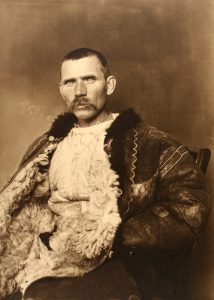
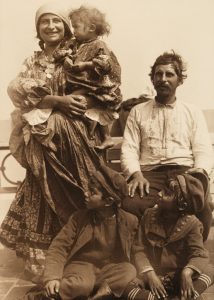
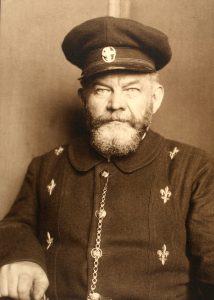 The United States has long been known as “The Melting Pot,” in reference to the immigration of many of its citizens. The United States was not a country that began with all of its people in place. I suppose no nation was really. There is, however, a legal way to immigrate, and an illegal way to sneak into a country. For the purpose of this story, the melting pot refers only to legal immigration. Beginning in 1892, and continuing until 1924, Ellis Island, located in New York Harbor, was the entrance for immigrants entering the United States. Not everyone who entered the United States had to go through Ellis Island, however. First and Second Class passengers were not so required. They were allowed to do all of their immigration paperwork, and inspections onboard the ship that arrived on. The Third Class passengers, however, were required to go through Ellis Island. There, they had medical exams and legal inspections to determine if they were fit for entry into the United States.
The United States has long been known as “The Melting Pot,” in reference to the immigration of many of its citizens. The United States was not a country that began with all of its people in place. I suppose no nation was really. There is, however, a legal way to immigrate, and an illegal way to sneak into a country. For the purpose of this story, the melting pot refers only to legal immigration. Beginning in 1892, and continuing until 1924, Ellis Island, located in New York Harbor, was the entrance for immigrants entering the United States. Not everyone who entered the United States had to go through Ellis Island, however. First and Second Class passengers were not so required. They were allowed to do all of their immigration paperwork, and inspections onboard the ship that arrived on. The Third Class passengers, however, were required to go through Ellis Island. There, they had medical exams and legal inspections to determine if they were fit for entry into the United States.
It is estimated that 12 million immigrants came through Ellis Island in those years. In all, about 2% were denied entrance into the United States. Our nation was quite generous with its legal immigration requests. One 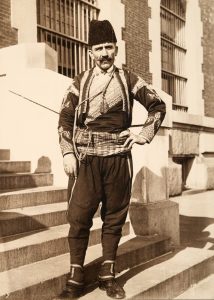
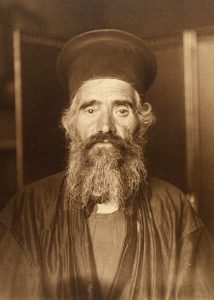 of the main reasons for the opening of Ellis Island was the change in the immigration requests. “Fewer arrivals were coming from northern and western Europe—Germany, Ireland, Britain and the Scandinavian countries—as more and more immigrants poured in from southern and eastern Europe. Among this new generation were Jews escaping from political and economic oppression in czarist Russia and eastern Europe (some 484,000 arrived in 1910 alone) and Italians escaping poverty in their country. There were also Poles, Hungarians, Czechs, Serbs, Slovaks and Greeks, along with non-Europeans from Syria, Turkey and Armenia. The reasons they left their homes in the Old World included war, drought, famine and religious persecution, and all had hopes for greater opportunity in the New World.”
of the main reasons for the opening of Ellis Island was the change in the immigration requests. “Fewer arrivals were coming from northern and western Europe—Germany, Ireland, Britain and the Scandinavian countries—as more and more immigrants poured in from southern and eastern Europe. Among this new generation were Jews escaping from political and economic oppression in czarist Russia and eastern Europe (some 484,000 arrived in 1910 alone) and Italians escaping poverty in their country. There were also Poles, Hungarians, Czechs, Serbs, Slovaks and Greeks, along with non-Europeans from Syria, Turkey and Armenia. The reasons they left their homes in the Old World included war, drought, famine and religious persecution, and all had hopes for greater opportunity in the New World.”
At one point, one of the men working on Ellis Island decided to bring his camera, and document the variety of people coming through. His photos really do show the “melting pot” that the United States was. He photographed a Romanian shepherd, a Serbian gypsy family, Danish captain, a bearded Greek priest, a Turkish bank guard, an Albanian soldier, an Algerian (wearing his finest clothes), and a tattooed German stowaway (who was eventually deported). It gives an inside look at the varied people who came to the United States, 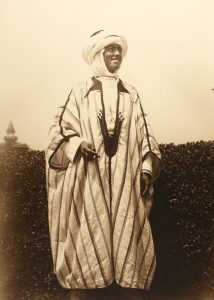
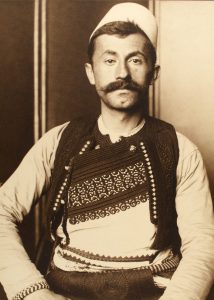
 and these were just the third class passengers, seen on Ellis Island.
and these were just the third class passengers, seen on Ellis Island.
Ellis Island was used as an immigration center until 1924, at which time it was used until 1954 as a detention and deportation center for illegal immigrants. Now it is a museum, and a place where people can go to see if their ancestors came through on their way to a better life. The island had a varied past, and played a major role in creating “The Melting Pot” the United States was.
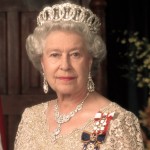
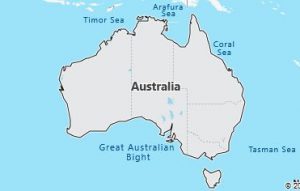 As nations grow in size, population, or power, many no longer want to be under the rule of another nation, even one that helped get them to where they are, and even one that has owned their land for years. It is something we, as Americans can’t really fathom, considering that we fought the Revolutionary War to leave British rule.
As nations grow in size, population, or power, many no longer want to be under the rule of another nation, even one that helped get them to where they are, and even one that has owned their land for years. It is something we, as Americans can’t really fathom, considering that we fought the Revolutionary War to leave British rule.
The decision was very different for Australia on November 6, 1999. Treasurer Wayne Swan and senior opposition figure Malcolm Turnbull, who once was Australia’s Republican Movement president, came together in the capital Canberra on the prior Monday to launch a book of essays called ‘Project Republic: Plans and Arguments for a New Australia’. Mr Turnbull, who sits on the front bench for the conservative opposition, described this latest push as “simply, purely patriotic” and called for an ‘interactive plebiscite’ to use cyberspace to better inform Australians of the issues surrounding constitutional change.
As it was, many feared the change, and the work and uncertainty that could accompany it. Still others, like being a part of the monarchy. “Many argue that the sexy celebrity status of William and Kate will sweep all before it and their star quality will revive the monarchy in Australia. I don’t think so,” Turnbull writes. “They will certainly be far more interesting and telegenic than Charles and Camilla – but I am not convinced that will translate into enhanced support for William (or indeed Charles) remaining our head of state.” His opinions aside, the people of Australia voted and decided that they just weren’t ready, and quite possibly they never would be ready to walk away from the British Monarchy. That actually happened in America too, because while 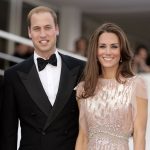
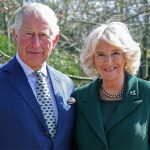 the overwhelming number of citizens wanted to go for independence, there were those who did not.
the overwhelming number of citizens wanted to go for independence, there were those who did not.
In Australia, it didn’t appear that the situation would have come to war, as it had in America, but one never really knows what can trigger a war of this type. I guess that in the case of Australia, if they are tired of the Queens rule, they have chosen to wait and see what the future ruling parties might bring. If they don’t like the outcome, they could always choose to break away at a later date.
 Every four years, Americans go to the polls to elect a new president. Looking at the first time that a president is elected, quite often, we know little about the person running for president. Even if they have been in Congress, it takes some digging to really discover who they are, and what they can do for our nation. We rely on things like the political party they belong to or the campaign promises they make. Still, we have no idea what the candidate will really do, until they are in office.
Every four years, Americans go to the polls to elect a new president. Looking at the first time that a president is elected, quite often, we know little about the person running for president. Even if they have been in Congress, it takes some digging to really discover who they are, and what they can do for our nation. We rely on things like the political party they belong to or the campaign promises they make. Still, we have no idea what the candidate will really do, until they are in office.
Sometimes, there are exceptions to that basic rule, however. Such was the case with Dwight D Eisenhower, who was the supreme commander of Allied forces in Western Europe during World War II. Of course, running a nation is not the same as running a war, unless the nation happens to be at war, that is. Nevertheless, a commander who excelled at leading a war, was by definition, a leader…making it a good bet that he could also lead a nation. Eisenhower was that kind of leader, and the people of the United States could see it clearly. He led the massive invasion of Nazi-occupied Europe that began on D-Day…June 6, 1944. Then in 1952, with victory under his belt, leading Republicans convinced Eisenhower, who by then was in command of NATO forces in Europe, to run for president. As the campaign progressed, it would remain to be seen, just how much the people of the United States thought that he would make a good leader for the nation. The election would be the telling point.
And so it went. Eisenhower won a convincing victory over Democrat Adlai Stevenson and would serve two terms in the White House (1953-1961). Even more amazing than his victory was the fact that General Dwight D Eisenhower won the American presidential elections with the largest number of popular votes ever recorded for a presidential candidate. It was a landslide victory. The people had spoken. Also of note, is that Eisenhower was the only other president to win the presidential election, having never served in any other political office. I’m sure everyone knows that the other president to do that is our current president…Donald Trump. That is an almost unheard of feat. A general and a businessman, both of whom had not been politically inclined, and yet, here they were. During his presidency, Eisenhower managed Cold War-era tensions with the Soviet Union under the looming threat of nuclear weapons, ended the war in Korea in 1953 and authorized a number of covert anti-communist operations by the CIA around the world. Here at home, America was in a period of relative prosperity, nevertheless, Eisenhower strengthened Social Security and created the massive new Interstate Highway System. Eisenhower was so well liked that he would beat Stevenson again four years later in a landslide to win re-election, despite health concerns after suffering a heart attack in 1955.
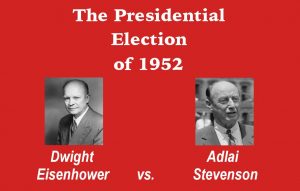
Eisenhower was born in Denison, Texas, on October 14, 1890. He grew up in Abilene, Kansas, as the third of seven sons in a poor family. His mother, a devout Mennonite and pacifist, was quite distressed when young Ike…as he was known…won an appointment to the US Military Academy at West Point, New York. Nevertheless, he went on to graduate in the middle of his class in 1915. While stationed as a second lieutenant in San Antonio, Texas, Eisenhower met Mamie Geneva Doud. The couple married in 1916 and had two sons, Doud Dwight, who died of scarlet fever as a small child, and John. World War I ended just before Eisenhower was scheduled to go to Europe, which was frustrating to the young officer, but he soon managed to acquire an appointment to the Command and General Staff College at Fort Leavenworth, Kansas. Graduating first in his class of 245, he served as a military aide to General John J Pershing, commander of US forces during World War I, and later to General Douglas MacArthur, US Army chief of staff. During his seven years serving under MacArthur, Eisenhower was stationed in the Philippines from 1935 to 1939.
Eisenhower returned soon after Nazi Germany’s invasion of Poland sparked the outbreak of World War II in Europe. In September 1941, he received his first general’s star with a promotion to brigadier general. After Japan attacked Pearl Harbor that December, US Army Chief of Staff General George C Marshall called Eisenhower to Washington, DC to work as a planning officer. Beginning in November 1942, Eisenhower headed Operation Torch, the successful Allied invasion of North Africa. He then directed the amphibious invasion of Sicily and the Italian mainland in 1943 that led to the fall of Rome in June 1944. In early 1943, he was made a full general. Eisenhower was appointed supreme commander of the Allied Expeditionary Force in December of that year and given the responsibility of spearheading the planned Allied invasion of Nazi-occupied Europe. On D-Day…June 6, 1944, more than 150,000 Allied forces crossed the English Channel and stormed the beaches of Normandy. The invasion led to the liberation of Paris on August 25 and turned the tide of the war in Europe decisively in the Allied direction. Having risen from lieutenant colonel in the Philippines to supreme commander of the victorious forces in Europe in only five years, Eisenhower returned home to a hero’s welcome in 1945 to serve as chief of staff of the US Army.
In 1948, Eisenhower left active duty and became president of New York City’s Columbia University. His brief 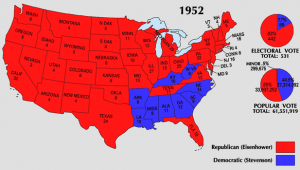 return to civilian life ended in 1950, however, when President Harry S Truman asked him to take command of the new North Atlantic Treaty Organization (NATO) forces in Europe. In that position, Eisenhower worked to create a unified military organization that would combat potential communist aggression around the globe. As President of the United States, while weathering criticism from both left and right, Eisenhower enjoyed high approval ratings throughout his administration. After leaving office in January 1961, he retired to his farm in Gettysburg, Pennsylvania. He worked largely on his memoirs, and would publish several books over the following years. He died on March 28, 1969, after a long illness.
return to civilian life ended in 1950, however, when President Harry S Truman asked him to take command of the new North Atlantic Treaty Organization (NATO) forces in Europe. In that position, Eisenhower worked to create a unified military organization that would combat potential communist aggression around the globe. As President of the United States, while weathering criticism from both left and right, Eisenhower enjoyed high approval ratings throughout his administration. After leaving office in January 1961, he retired to his farm in Gettysburg, Pennsylvania. He worked largely on his memoirs, and would publish several books over the following years. He died on March 28, 1969, after a long illness.
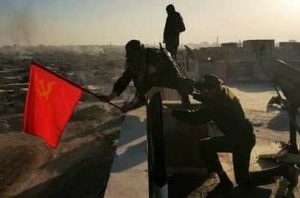 The ending of a war, does not always mean the beginning of peace, or even the end of fighting. Those who lost, don’t usually like the fact that they lost. As World War I drew to a close, angry rebels in both Germany and Austria-Hungary carried out a revolt on November 3, 1918, raising the red banner of the revolutionary socialist Communist Party and threatening to follow the Russian example in bringing down their imperialist governments.
The ending of a war, does not always mean the beginning of peace, or even the end of fighting. Those who lost, don’t usually like the fact that they lost. As World War I drew to a close, angry rebels in both Germany and Austria-Hungary carried out a revolt on November 3, 1918, raising the red banner of the revolutionary socialist Communist Party and threatening to follow the Russian example in bringing down their imperialist governments.
By the last week of October 1918, three of the Central Powers…Germany, Austria-Hungary, and the Ottoman Empire…were in talks with the Allies about reaching an armistice, while the fourth, Bulgaria, had concluded talks in September. On October 28, approximately 1,000 sailors in the German navy were arrested because they refused to follow orders from their commanders to launch a last-ditch attack against the British in the North Sea.
The rebels soon immobilized the German fleet. Then, the resistance spread to the German city of Kiel, where some 3,000 sailors and workers raised the red flag of communism on November 3. Admiral Wilhelm Souchon, the governor of Kiel, quickly called on naval officers who were loyal to the government to suppress the revolt. During the ensuing battle, eight rebels were killed, but the general resistance continued.
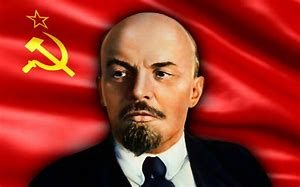 Meanwhile, the revolution was spreading in Vienna, as well as in Budapest, where the former Hungarian prime minister, Count Istvan Tisza, was assassinated by members of the communist-led Red Guard on October 31. By now, the empire was in shambles, so the Austro-Hungarian government secured an armistice with the Allied powers on November 3rd, ending its participation in World War I. That same day in Moscow, at a mass rally in support of the Austrian rebels, the communist leader Vladimir Lenin declared triumphantly: “The time is near when the first day of the world revolution will be celebrated everywhere.” It seems that evil will try to reincarnate, wherever it can find a group sympathetic to its cause.
Meanwhile, the revolution was spreading in Vienna, as well as in Budapest, where the former Hungarian prime minister, Count Istvan Tisza, was assassinated by members of the communist-led Red Guard on October 31. By now, the empire was in shambles, so the Austro-Hungarian government secured an armistice with the Allied powers on November 3rd, ending its participation in World War I. That same day in Moscow, at a mass rally in support of the Austrian rebels, the communist leader Vladimir Lenin declared triumphantly: “The time is near when the first day of the world revolution will be celebrated everywhere.” It seems that evil will try to reincarnate, wherever it can find a group sympathetic to its cause.
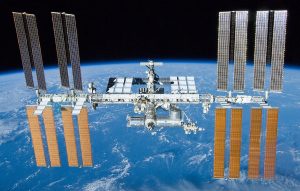 On mornings when I wake up with a backache, the idea of sleeping in a zero gravity chamber sounds appealing, but in reality, living in a zero gravity environment is probably not something I would want to do for very long. While I admit, gravity can put a strain on our bodies in many ways, I don’t think we were really designed to live our whole life without gravity. Nevertheless, living and working in space have become more commonplace than many of us realize. We don’t give much thought to the men and women who live and work in the International Space Station, or in the various crafts that have transported them there over the years.
On mornings when I wake up with a backache, the idea of sleeping in a zero gravity chamber sounds appealing, but in reality, living in a zero gravity environment is probably not something I would want to do for very long. While I admit, gravity can put a strain on our bodies in many ways, I don’t think we were really designed to live our whole life without gravity. Nevertheless, living and working in space have become more commonplace than many of us realize. We don’t give much thought to the men and women who live and work in the International Space Station, or in the various crafts that have transported them there over the years.
It was on November 2, 2000, that the first residential crew would arrive aboard the International Space Station (ISS). The arrival of Expedition 1 was the mark of the beginning of a new era of international cooperation in space and of the longest continuous human habitation in low Earth orbit…and it continues to this day…even without the Space Shuttle’s operation…though I don’t think it is as easy to work out the logistics without the Space Shuttle. Two Russians, Yuri Gidzenko and Sergei Krikalev, accompanied by NASA’s Bill Shepherd, were selected as the crew of Expedition 1.
It was decided that we needed an International Space Station in 1998, and the space agencies of the United States, Russia, Canada, Japan and Europe agreed to cooperate to bring it to pass. Its first components were launched into orbit later that year. In all, there would be five space shuttle flights and two unmanned Russian flights to complete the delivery of many of its core components and partially assemble the space station. It was  a huge project that would possibly accomplish in space, what we had never been able to accomplish on Earth…nations working together on experiments that mattered to all of them to bring about changes in key areas like health, agriculture, energy, and a host of other things. The ISS was truly a first.
a huge project that would possibly accomplish in space, what we had never been able to accomplish on Earth…nations working together on experiments that mattered to all of them to bring about changes in key areas like health, agriculture, energy, and a host of other things. The ISS was truly a first.
The two cosmonauts and the astronaut arrived at the ISS on a Russian Soyuz rocket that had been launched from Kazakhstan. This first mission was tasked mostly with constructing and installing various components and activating others. This was sometimes easier said than done, and in fact, the crew reported that it took over a day to activate one of the station’s food warmers. I hope they weren’t too hungry!! Throughout their time in space, they were visited and resupplied by two unmanned Russian rockets and three space shuttle missions, one of which brought the photovoltaic arrays, giant solar panels, which provide most of the station’s power.
Shepherd, Gidzenko and Krikalev became the first humans to adjust to long-term life in low orbit, circling the Earth roughly 15.5 times a day and exercising at least two hours a day in order to offset the muscle atrophy that occurs in low gravity. This is where I thought relief of backaches for sleeping wrong might have been solved, but it turns out that there were a host of other problems that come for long-term weightlessness. Who knew? Things like lessened bone density, and pain in joints upon returning to Earth. Hmmm, I guess I’ll sleep here on Earth in gravity, and take Excedrin as needed.
 Finally, on March 10, four months after they arrived at the ISS, the space shuttle Discovery brought three new residents to relieve Expedition 1, who landed back on Earth at the Kennedy Space Center on March 21. Since then, humans have continuously resided on the ISS, with plans to continue until at least 2030. 236 people from 18 nations have visited the station and a number of new modules have been added, many for the purpose of research into biology, material sciences, the feasibility of further human space travel and more. Some tams have been there longer than other teams, but all of them have made great contributions to science during their time on the ISS.
Finally, on March 10, four months after they arrived at the ISS, the space shuttle Discovery brought three new residents to relieve Expedition 1, who landed back on Earth at the Kennedy Space Center on March 21. Since then, humans have continuously resided on the ISS, with plans to continue until at least 2030. 236 people from 18 nations have visited the station and a number of new modules have been added, many for the purpose of research into biology, material sciences, the feasibility of further human space travel and more. Some tams have been there longer than other teams, but all of them have made great contributions to science during their time on the ISS.

